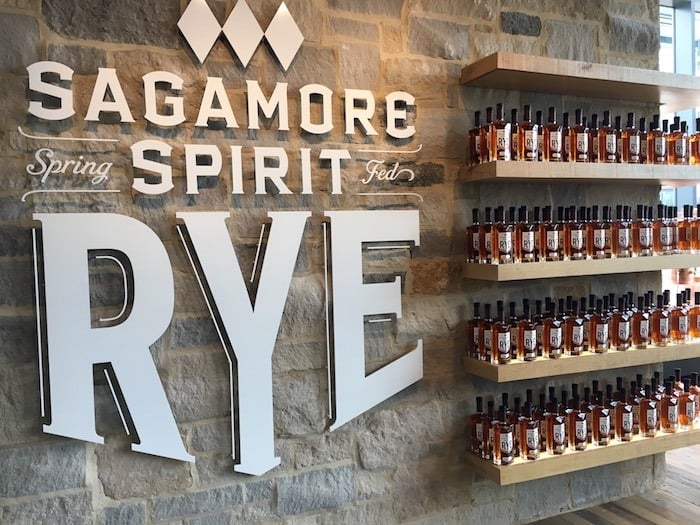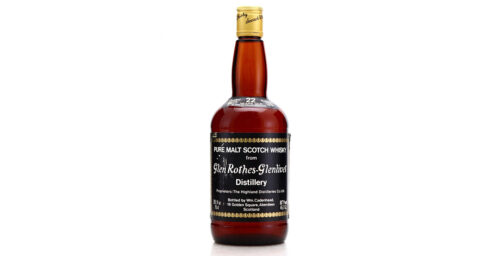It is perhaps symbolic of our era that the most faithful recreation of Maryland-style rye whiskey is made in Colorado and the largest rye whiskey distillery in Maryland uses recipes developed in Southern Indiana.
Rye whiskey is where the action is.
Leopold Brothers is the Colorado distillery making rye whiskey in the world’s only three-chamber still, a type that was widely used in Maryland and Pennsylvania to make very flavorful rye whiskey a century ago. Bottled after four years in wood, it is available on its own or in a blend with column-distilled rye made at Cascade Hollow (formerly George Dickel) in Tennessee.
Though inspired by Maryland distilling practices of the late 19th and early 20th centuries, the Leopolds don’t call their product Maryland rye. The product formerly known as Leopold Brothers Maryland-Style Rye Whiskey is no longer in the company’s portfolio. The new product is called Leopold Brothers Three Chamber Rye Whiskey. The Dickel product is called Collaboration Blend.

Meanwhile, in Baltimore, Sagamore Spirit released its first Maryland-distilled, bottled-in-bond straight rye whiskey in November. Sagamore is Under Armour CEO Kevin Plank’s whiskey company. Their Baltimore distillery is the largest in the East and makes only rye whiskey, but it has been making it only since 2017, hence a 4-year-old eligible for bottled-in-bond debuted in 2021.
Sagamore Rye is a combination of two rye whiskeys. One is the famous MGP 95-percent rye. The other is a 51-percent rye buffered with corn that MGP has made since 2013. How the two are blended is Sagamore’s contribution. Except for this new release, the Sagamore in stores now is whiskey made by MGP in Southern Indiana, but since 2017 Sagamore has made great quantities of both recipes at its distillery in Baltimore’s Port Covington neighborhood. Made-in-Maryland Sagamore Rye should be widely available soon.
Other Maryland outfits make rye whiskey, such as Gray Wolf in Saint Michaels.
Maryland rye may be about to embark on the journey Tennessee whiskey took a few years back. Is ‘Maryland rye’ simply any rye whiskey made in Maryland? Or is it a distinctive style? And if ‘Maryland rye’ is a distinctive style, what are the characteristics of that style? Can ‘Maryland-style rye’ be made in Colorado? Or Indiana?
The answer to these questions is, only time will tell. Ultimately, whiskey consumers will decide whether or not Maryland rye is a thing.
Meanwhile, distillers, still makers, and farmers have only just begun to scratch the surface in terms of what is possible with rye whiskey, and not just in Maryland. New York, Pennsylvania and Virginia all once had robust, homegrown rye whiskey industries and could again.
Why mention farmers? Because today, almost all of the rye grown in the United States is never harvested. It is planted as a cover crop. Most of the rye sold to U.S. distilleries is grown in Canada or Northern Europe. Only Minnesota grows enough high-quality rye to supply major U.S. producers.
Hallock, Minnesota is a hard goal shot from the Canadian border. There, in the Red River Valley, on a farm tilled by the Swanson family for more than a century, Minnesota rye is grown and distilled into whiskey at the aptly-named Far North Distillery. For their Roknar 100% Rye they had a nearby maltster malt some of it for them. A nearby cooperage made the barrels from Minnesota oak. It is a tiny release most of us will never taste, but we can enjoy the idea of it and hope for more like it.
More than one distiller, researching how rye whiskey used to be made, has come across mention of Rosen Rye, a hybrid developed about a century ago at what is now Michigan State University. Rosen is supposed to be great for making very flavorful rye whiskey. Too bad no one grows it. The only seeds are in seed banks. It takes time to turn a handful of seed bank seeds into a crop, then more years to turn those plump, juicy kernels into whiskey. Then more years to figure out the ideal way to age the resulting distillate, which if the Leopold Brothers Three Chamber Rye is any indication, will taste very different from most of the other rye whiskey made today.
But a few hardy souls are trying to get more flavorful rye varieties into the ground and then into a bottle. The Delaware Valley Fields Foundation (DVFF) has a mission to support small farmers in the countryside around Philadelphia. They work with the United States Department of Agriculture Research Service, universities, and farmers to resurrect ‘lost’ grains such as Rosen.
Dancing Star Farms in Imler, Pennsylvania has grown Rosen for the DVFF for several years. Stoll & Wolfe in Lititz distilled some of Dancing Star’s grain. Their recently released Straight Keystone Rosen Rye Whiskey is only two years old and not widely available but is a harbinger of things to come. George Washington’s Distillery at Mount Vernon got some of Dancing Star’s Rosen crop and made whiskey from it in December. An unaged version will be released this year, the rest when it’s ready.
Dancing Star planted 45 acres of Rosen for the DVFF in the fall of 2021. The DVFF has another 50 acres on other farms in the region.
Rosen is unusual because it needs to be grown in isolation. In Michigan, Ari Sussman of Mammoth Distilling is working with Michigan State University and the National Park Service to farm Rosen on a Park Service island in Lake Michigan, the same island that produced pure Rosen seed for farmers in the grain’s heyday.
Rosen is just one variety. Abruzzi, which is grown for the Leopolds in Colorado, is another. There are more. Maybe some good heirloom varieties are waiting to be discovered, or new hybrids can be developed. Grains are usually developed for yield, which for alcohol means more starch. Is flavor-for-alcohol a good trade-off? Again, only time will tell.
Kids, this is where the action is, and it is going to be good.








